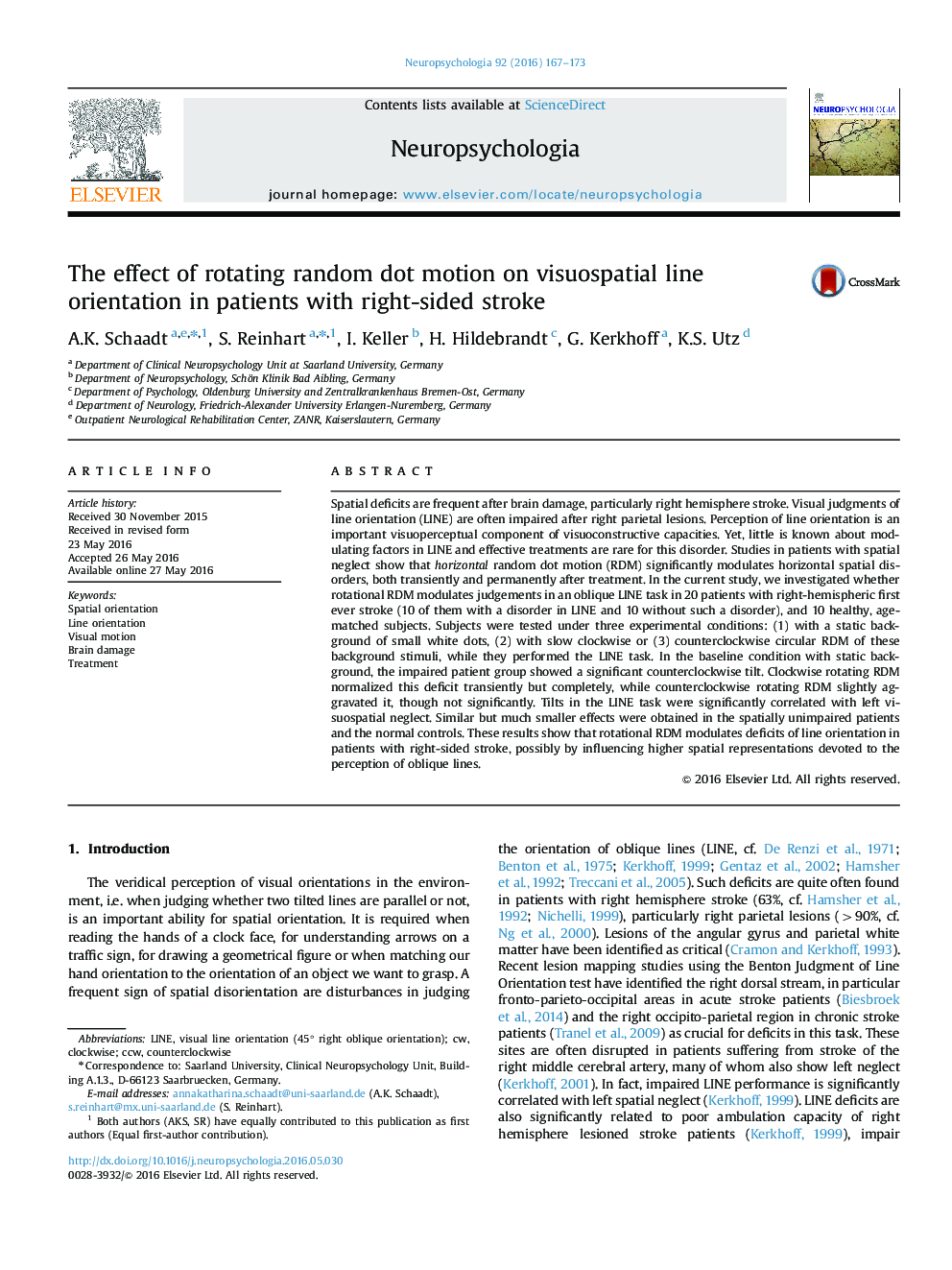| کد مقاله | کد نشریه | سال انتشار | مقاله انگلیسی | نسخه تمام متن |
|---|---|---|---|---|
| 5045438 | 1475562 | 2016 | 7 صفحه PDF | دانلود رایگان |
- Visual line orientation (LINE) is often impaired after stroke.
- We examined the effects of random dot motion (RDM) on LINE in stroke patients.
- Pathological counterclockwise errors were observed in LINE after right-sided stroke.
- LINE errors were transiently normalized by clockwise rotating RDM.
- This may offer treatment options for visuospatial disorders after stroke.
Spatial deficits are frequent after brain damage, particularly right hemisphere stroke. Visual judgments of line orientation (LINE) are often impaired after right parietal lesions. Perception of line orientation is an important visuoperceptual component of visuoconstructive capacities. Yet, little is known about modulating factors in LINE and effective treatments are rare for this disorder. Studies in patients with spatial neglect show that horizontal random dot motion (RDM) significantly modulates horizontal spatial disorders, both transiently and permanently after treatment. In the current study, we investigated whether rotational RDM modulates judgements in an oblique LINE task in 20 patients with right-hemispheric first ever stroke (10 of them with a disorder in LINE and 10 without such a disorder), and 10 healthy, age-matched subjects. Subjects were tested under three experimental conditions: (1) with a static background of small white dots, (2) with slow clockwise or (3) counterclockwise circular RDM of these background stimuli, while they performed the LINE task. In the baseline condition with static background, the impaired patient group showed a significant counterclockwise tilt. Clockwise rotating RDM normalized this deficit transiently but completely, while counterclockwise rotating RDM slightly aggravated it, though not significantly. Tilts in the LINE task were significantly correlated with left visuospatial neglect. Similar but much smaller effects were obtained in the spatially unimpaired patients and the normal controls. These results show that rotational RDM modulates deficits of line orientation in patients with right-sided stroke, possibly by influencing higher spatial representations devoted to the perception of oblique lines.
Journal: Neuropsychologia - Volume 92, November 2016, Pages 167-173
